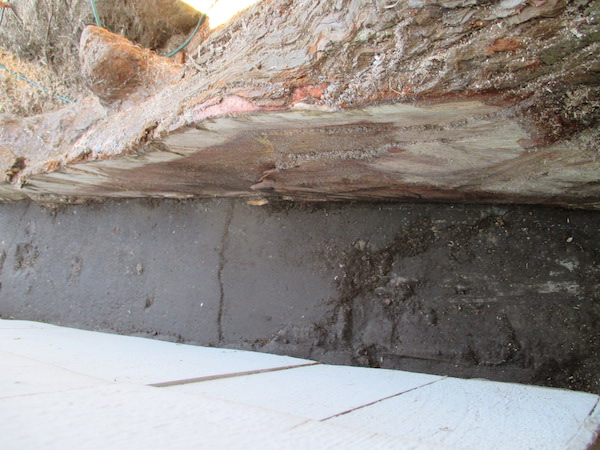Tree root damage
|
When people damage roots of trees or shrubs, the effect on the plant can vary from little harm to causing a fatality. The details matter. This brief summary shares a few general observations on the factors that affect tree response to root injury. Roots are damaged in transplanting, in trenching for buried utility work, in digging holes for fence posts, for new plantings, or whatever. Roots are also cut intentionally sometimes, a technique called root pruning.
|
TIMING. Late summer and autumn is least injurious in general because tree root growth is at its peak then. Worst time is late spring and early summer because the tree is growing its foliage and flowers/fruit then.
|
SPECIES VARY. Regarding root disturbance, camellias, magnolias and hemlocks are more sensitive, while plum trees, birches, and maples are more resistant.
|
TRENCHING & BORING. In general, the ideal is to be as far away as possible from the trunk. Also, to tunnel or bore if possible, rather than trench. Deeper is better if tunneling, shallow is safer if trenching. If trenching permits, at least going under as many big roots as possible, helps. If trenching near the trunk is inevitable, thus severing much of the root system, it is prudent to consider that the damage may be so traumatic that the tree can end up showing major dieback; may get infected with a fungal or insect pathogen; may be rendered far less wind-firm and at higher risk of tilting or collapsing.
|
WHERE ROOTS GROW. Most tree root systems grow broadly, saucer-like and shallow. Most grow in all directions, favoring moisture or rich soil. Impervious concrete, huge rocks, and whatnot, cause roots to grow differently than if no such things were present. Tree roots extend more distance from the trunk than most people would ever guess. The "drip line" is not the limit. Even a trunk only an inch thick can send roots 9 feet away!
|
NECESSARY CUTTING. Some root cutting must happen in transplanting and during construction. One need not make razor sharp "clean" cuts; even crude rough "hacked" roots will regenerate. If the cutting is done in drying conditions rather than on a cloudy moist day, then the action ought to be quick, and some misting or watering done to minimize the trauma. Once the cutting is done, back filling or mulching, and where warranted any amending, treating with biological agents, or fertilizing, should be done, and then watering must be done carefully on an as-needed basis given the tree species, the soil, the weather, the degree of damage.
|
VALUE. Saving trees due to an emotional attachment or to placate tree lovers, rather than felling them and replanting, is sometimes penny-wise but pound-foolish. If the tree is so damaged that it goes into a decline that is akin to an extended, slow dying, then its value to the visual landscape is marred. Sacrificing it at once, and replanting with the ideal replacement(s), can be better in the long run.
Back |

redwood root sliced by a chainsaw ; photo by ALJ
|

redwood root after 2 years of regrowing ; photo by ALJ
|
|
|

